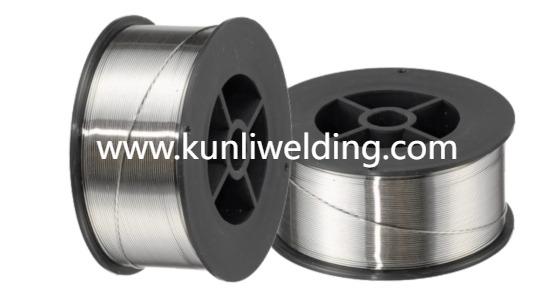Discusses travel speed deposition balance and testing steps that help teams pick a diameter that meets both production tempo and finishing needs.

Choosing the right wire diameter is a detail that can change how smoothly a job runs and how the weld performs, and Aluminum Welding Wire ER5087 often comes into the conversation when fabricators plan marine or heavy duty joins. In current industrial conversations about resilient supply chains and reduced maintenance windows, the diameter you select for your welding machine can affect feed reliability arc stability and joint properties. This guide walks through the practical factors welders and procurement teams should weigh when matching ER5087 wire diameter to their equipment and application.
Start with the welding machine capability. Different wire feeders and spool adapters accept certain ranges of wire diameters more readily than others. A feeder that is tolerant of a narrower wire form will keep tension and feed smooth which reduces bird nesting and burn back. If the machine is used in a mix of manual and mechanized processes, pick a diameter that balances ease of feed with the deposition rate needed for the joint. That decision reduces time spent swapping liners and changing contact parts during a run.
Consider joint geometry and plate thickness. Thinner sections benefit from lower heat input and finer wire where the operator can control the puddle more precisely. Thicker joints demand higher deposition which can be achieved by stepping up the diameter and pairing it with appropriate travel speed and heat settings. Matching diameter to joint width and to the filler requirement avoids overfilling or lack of fusion and shortens finishing work. In environments where panels must maintain flatness, the right diameter helps control shrinkage by allowing the welder to tune passes rather than forcing heavy single passes.
Feed path and consumable compatibility matter in daily practice. Contact tip orifice diameter liner type and spool tension should align with the chosen wire size. A mismatch in these elements causes irregular feed and can produce porosity or inconsistent arc that triggers rework. For teams running automated cells, consistent spool geometry and uniform wire surface reduce the chance of stoppages during long sequences. If the shop is expanding automation or remote monitoring capability make the chosen diameter feed reliably with robotic feeders and with handheld torches.
Think about deposition and travel speed together. A thicker wire deposits more metal per unit time which can shorten cycle time but may require a change in welding technique to control heat input. For job types where speed matters and where a heavier bead is acceptable, a larger diameter can save time on the arc. For delicate trim and visible joints a finer wire helps produce smaller beads that need less grinding and blending. Balance these factors with the machine power available so the arc remains stable under heavier feed.
Environmental and handling conditions affect choice. Wire that picks up moisture in storage increases the chance of pores in the weld. Choosing a diameter that comes in a sealed spool form and that the supplier packages to match local humidity conditions reduces waste. On site, store spools in dry boxes and use short runs from spool to feeder to limit exposure. Field work under variable conditions often benefits from a spool size and diameter that make handling simple and that reduce the need for frequent spool swaps.
Quality control and testing are practical steps that pay off. Before committing to a large production run try sample joints with the selected diameter on representative parts and inspect for fusion penetration bead profile and surface condition. If the job is safety critical include mechanical checks and follow inspection protocols that match the application environment. Early trials shorten qualifying steps on new programs and reduce the risk of stoppages once the main run begins.
Supplier support and documentation matter more now as supply chains tighten and as producers respond to sustainability goals. Choose suppliers that document which spool formats and diameters work best with common feeders and who publish handling notes that address storage transport and feed profile recommendations. That kind of guidance helps welders tune machine parameters faster and reduces the risk of feed related defects that slow production.
When matching wire diameter remember the decision touches procurement production and maintenance. A well chosen diameter reduces downtime limits rework and aligns with finish expectations while keeping feeders stable across shifts. For specific product forms and handling notes related to ER5087 wire check the manufacturer news and technical pages which list intended applications spool formats and recommended feed practices. The product news and technical notes on www.kunliwelding.com provide details about wire construction recommended handling and spool options that help teams select the right diameter and keep machines running smoothly into future projects.
- Art
- Causes
- Crafts
- Dance
- Drinks
- Film
- Fitness
- Food
- Games
- Gardening
- Health
- Home
- Literature
- Music
- Networking
- Other
- Party
- Religion
- Shopping
- Sports
- Theater
- Wellness


